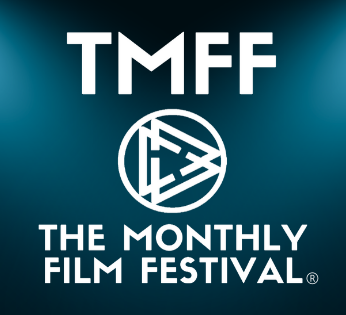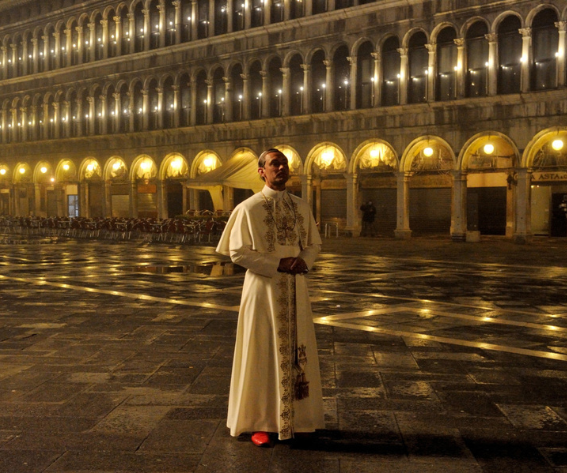In March, Hulu premiered the miniseries Devs, written, directed, and showrun by Alex Garland. In May, Netflix will release The Eddy, the first series by Oscar-winning director Damien Chazelle, who directed La La Land, Whiplash, and First Man. However, 20–30 years ago, this would have been practically impossible, as great directors avoided television and series.
We use nine original series as examples to explain how this new reality came about and provide a list of shows to watch during quarantine — the perfect time to relax with gripping series or try something different, like claiming a Richard Casino bonus for some online entertainment.
David Lynch
Twin Peaks, 1990–1991, 2017
What it’s about: An FBI agent investigates the murder of high school student Laura Palmer in the town of Twin Peaks, Washington, near the Canadian border.
Far from being the highest-grossing director but with a very distinctive style, David Lynch moved into television and, together with Mark Frost, created a cult series. Beyond sparking a mini-revolution in television and influencing technical standards, Twin Peaks was recognisably Lynchian in both style and theme. Even though Lynch directed only six of the 30 episodes, he built an entire universe within them.
However, it should be remembered that the series was made within the ABC television system, so he could not be as candid as he would have liked (cable channels would offer more freedom in the future). As a result, in 1992, Lynch returned to Twin Peaks to make a full-length film, Twin Peaks: Fire Walk with Me.
The third season of Twin Peaks in 2017 not only became a major event in the worlds of cinema and television but also demonstrated how radically the television format has changed over the past 25 years. It showed that, nowadays, anything is possible on TV.
Lars von Trier
The Kingdom (Riget), 1994, 1997
What it’s about: The everyday life of a neurosurgery department in a Copenhagen hospital haunted by ghosts.
In Europe, unlike in the US, there was no such gap between big cinema and series, and working in television was not considered shameful, even for renowned directors. Examples include Rainer Werner Fassbinder’s Berlin Alexanderplatz and Krzysztof Kieslowski’s Decalogue. This is especially true in Scandinavia, where famous directors such as Ingmar Bergman had no qualms about working in television. Moreover, in 1992, the Swede Bille August won at the Cannes Film Festival with the film Good Intentions, which today would likely be called a miniseries.
Although Lars von Trier claimed that The Kingdom was “sold out,” this statement can be seen as a typical provocation. The series is a completely original work that can easily be included in his 1990s oeuvre. It is the first harbinger of the principles of Dogma 95, a manifesto created with Trier’s active participation, which influenced everything he filmed in the 1990s.
The series was deliberately shot in a “dirty” style: often with a handheld camera, on 16mm film, and in sepia — which, in this case, does not add any nobility to the image (except for the introduction to each episode). It features the editing style that would become characteristic of Trier’s films up to Dogville.
The Kingdom presents a much more relaxed and playful Trier, whom we would never have seen without television. The two seasons of the series, filmed and released three years apart, follow the routine, intrigues, and problems of a hospital’s neurosurgery department.
There are ghosts and séances, completely surreal situations, and dark, absurd humour. The crowning touch is the episodes featuring a kind of chorus that, as in ancient theatre, comments on the action. Its role is played by two characters with Down syndrome who work on a dishwashing conveyor belt and discuss the events of the series.
After the release of The Kingdom, American critic Leonard Maltin said it was a must-see for anyone who thinks they have seen it all. Twenty-five years later, this recommendation remains relevant.
Edgar Wright
Spaced, 1999–2001
What it’s about: A man (Simon Pegg) and a woman (Jessica Stevenson), who are strangers, pretend to be a couple in order to rent a cheap flat in London.
Edgar Wright is the only director on our list who directed a series without being previously well-known. However, both seasons of Spaced are unmistakably Wright, full of his visual tricks and an incredible number of pop culture references. This sitcom, atypical for its time, marked the beginning of a long period of collaboration between Wright and Simon Pegg as a screenwriter and acting team, which ultimately gave us the entire Cornetto Trilogy.
Jane Campion
Top of the Lake (2013, 2017)
What it’s about: A sex crimes detective investigates the disappearance of a 12-year-old pregnant girl in the New Zealand wilderness.
The story of Top of the Lake partly follows the European model, where big-name directors could easily work in television. The film that made Jane Campion world-famous, The Angel at My Table (1990), was also shot for television in the format of a miniseries. It won several prizes at the Venice Film Festival, including the Special Jury Prize.
Top of the Lake is one of the first projects that anticipate what has become standard today. It is a miniseries conceived and executed by a single person as director, screenwriter, and producer for one season. In this case, we cannot speak of total control by Campion, but it was not about pressure from producers or showrunners; rather, it was a conscious collaboration — scriptwriting with Gerard Lee and directing with Garth Davis, with whom Campion shot most of the episodes.
In fact, it functions as one big film. Its premiere at the Sundance Film Festival involved screening all episodes at once as a single whole (with one intermission).
Another notable aspect of the project is that it was renewed for a second season, again with Campion at the helm, but not as a continuation of the original story. Instead, it presented a different story with the same main character.
Steven Soderbergh
The Knick, 2014–2015
What it’s about: A naturalistic medical drama depicting everyday life in a New York hospital in the early 20th century.
In the transition of great directors to the TV format, The Knick marked the end of a defining five-year period. It began with House of Cards (premiered February 2013), which not only secured big movie stars for the lead roles but also attracted David Fincher, who had been involved in the project since the late 2000s and directed the first two episodes of the first season. At the same time, work continued on the series True Detective, filmed entirely by one director, Cary Fukunaga.
For The Knick, the director, cinematographer, and editor of both seasons was the same person — Steven Soderbergh. He essentially shot two ten-hour films, with the necessary resources and full control over the process.
The case of The Knick in recent television history was arguably even more important than True Detective. While the latter was shot by the relatively novice director Fukunaga, who had only two films under his belt, Soderbergh had been in the film industry for more than 20 years. During that time, he won at the Cannes Film Festival, received an Oscar, and ranked 46th among directors with the highest box office earnings, with his films grossing over $2 billion. For the Cinemax cable channel, this was an image-building project that clearly demonstrated how and why television is winning over viewers worldwide.
Paolo Sorrentino
The Young Pope, The New Pope, 2016–2019
What it’s about: The newly elected Pope Pius XIII (Jude Law) unexpectedly leads the Catholic Church in an ultra-conservative direction.
On 3 September 2016, the first two episodes of The Young Pope by director and screenwriter Paolo Sorrentino were shown at the Venice Film Festival. It was a revolutionary event. For the first time in its history, the festival included a television production that was not created for the big screen and was incomplete — only two episodes out of ten. The following year, Cannes would follow Venice’s lead, screening selected episodes of David Lynch’s Twin Peaks and the second season of Jane Campion’s Top of the Lake.
It would be unthinkable to ignore The Young Pope, and Venice responded quickly and decisively to what was happening in the television industry. This is truly an auteur work, with all the characteristics typical of Sorrentino. The series is made in the language of great cinema, and it would be senseless to overlook it, especially since it comes from one of the few world-famous Italian directors.
The bastions fell. Festivals recognised the artistic significance of series, and The Young Pope, renewed for a second season even before its release, showed that in the coming years we would see even more series that can be called auteur works.
Nicolas Winding Refn
Too Old To Die Young, 2019
What it’s about: The double life of a Los Angeles police officer (Miles Teller) drags him back into hell.
The Young Pope could still be explained in terms of the former worldview. It seemed like a temporary alliance between television and big cinema designed to attract mainstream viewers: a famous director, Jude Law in the lead role, Vatican intrigues, and so on.
Too Old to Die Young, however, initially gives the impression of a series aimed at an arthouse audience — a rather specific one at that. Not everyone will understand Nicolas Winding Refn’s authorial style, and not everyone who does understand it will want to engage with it.
The slow pace, as if everything is happening in slow motion, the silent characters, the aggressive editing, and the stylised yet naturalistic violence — all the hallmarks of Refn’s mature style are on display here. The fact that Amazon was willing to back such a project in the first place, giving Refn and Ed Brubaker the opportunity to realise a surreal, bloody, and unusual series with episodes of varying lengths (from an hour to an hour and a half), without any stars in the cast and clearly aimed at a niche audience, proves one thing: streaming services and television are ready to push boundaries even further.
Mike Flanagan
The Haunting of Hill House, 2018—…
If we look at the history of English-language television series globally, projects in the horror and science fiction genres turn out to be among the most enduring. Series from the 1960s, such as Doctor Who, Star Trek, and The Twilight Zone, are still being watched today, and some even appear in IMDb’s television ratings. Horror series developed most actively and productively as anthologies.
Another important factor is that genre directors with distinctive styles began working in television much earlier than their counterparts in auteur cinema. The logical culmination of this process was the two seasons of Masters of Horror from 2005 to 2007, each episode filmed as a separate hour-long film by a well-known genre director — each with complete creative freedom.
Mike Flanagan’s The Haunting of Hill House is both a logical continuation of the horror tradition and a natural manifestation of contemporary trends in television and streaming. The original series, conceived and realised by Flanagan, tells a single story over the course of an entire season rather than a single episode. It is a revisionist take on Shirley Jackson’s famous 1959 horror novel.
After the series became one of Netflix’s most successful projects of 2018, both critically and with audiences, the company naturally wanted a sequel. Flanagan followed the logic of an anthology: in the second season, we can expect a free adaptation of another iconic ghost story — Henry James’s The Turn of the Screw (1898). By an interesting coincidence (which is almost certainly intentional), Flanagan chose books whose best adaptations were released in the same year — 1961 — and which are considered not only genre classics but cinema classics in general.









Leave a reply